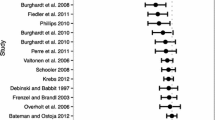Abstract
Numerous hypotheses have been proposed for the commonly observed, positive relationship between local abundance and geographic distribution in groups of closely related species. Here I consider how hostplant specialization and abundance affect the relative abundance and distribution of lycaenid butterflies (Lepidoptera: Lycaenidae). I first discuss three components of specialization: local specialization, turnover of specialization across a species’ range, and the minimum number of resources (or habitats) required by a species. Within this framework, I then consider one dimension of a lycaenid species’ niche, larval hostplant specialization. In a subalpine region of Colorado, I surveyed 11 lycaenid species and their hostplants at 17 sites. I compare this local information to continental hostplant use and large-scale distributions of the lycaenids and their hostplants. Local abundance of a lycaenid species is positively correlated with its local distribution (the number of sites occupied), but not with its regional or continental distribution. Neither local specialization (the number of hostplants used within one habitat) nor continental specialization (the number of hostplants used across many habitats) is correlated with local lycaenid abundance. Continental specialization is positively correlated with a species’ continental distribution, however. Finally, while generalist butterflies tend to have more hostplant available to them, differences in resource availability do not explain the differences in butterfly abundance. Although local abundance is correlated only with local distribution, I suggest that abundance-distribution relationships might emerge at regional and continental scales if local abundance were averaged across many habitat types. Consideration of the scale of a species’ resource specialization (within or among habitats) appears to be key to understanding the relationships between resource specialization, resource availability, and a species’ abundance and distribution.
Similar content being viewed by others

Author information
Authors and Affiliations
Additional information
Received: 1 September 1999 / Accepted: 12 December 1999
Rights and permissions
About this article
Cite this article
Hughes, J. The scale of resource specialization and the distribution and abundance of lycaenid butterflies. Oecologia 123, 375–383 (2000). https://doi.org/10.1007/s004420051024
Issue Date:
DOI: https://doi.org/10.1007/s004420051024



